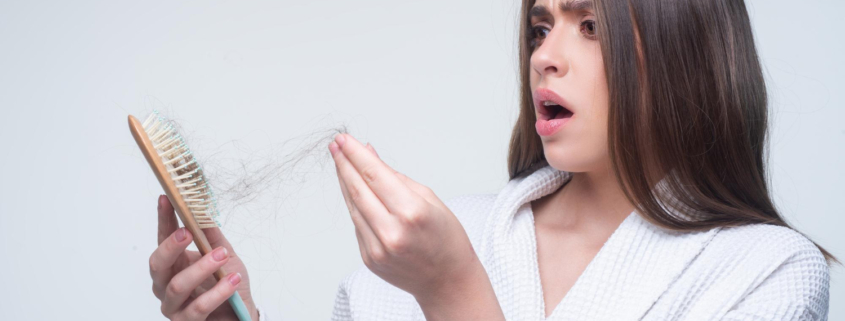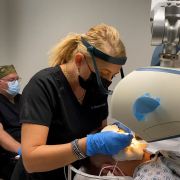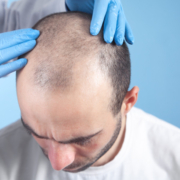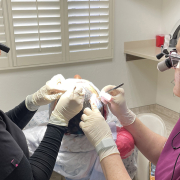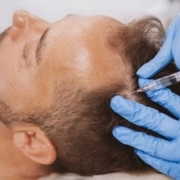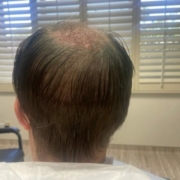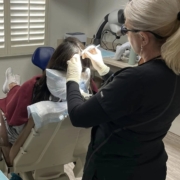Are Hair Transplants an Option for Women? Everything You Need to Know About Female Hair Restoration
Hair loss is often associated with men, but it is also a significant concern for many women. Female hair loss can be caused by various factors, including genetics, hormonal changes, and medical conditions. For women who have struggled with thinning hair or bald spots, hair transplants have emerged as a viable solution. In this comprehensive guide, we will explore whether hair transplants are an option for women, how they work, and what you need to know about female hair restoration.
Understanding Female Hair Loss
Causes of Female Hair Loss
Hair loss in women can be attributed to several factors:
- Genetics: Like men, women can inherit hair loss patterns from their families. This is known as female pattern baldness.
- Hormonal Changes: Conditions such as pregnancy, menopause, and thyroid disorders can cause temporary or permanent hair loss.
- Medical Conditions: Autoimmune diseases, such as alopecia areata, and scalp infections can lead to hair loss.
- Medications: Certain drugs, including chemotherapy and antidepressants, may cause hair thinning as a side effect.
- Stress: Emotional or physical stress can trigger hair loss, known as telogen effluvium.
- Nutritional Deficiencies: Lack of essential nutrients, such as iron and vitamins, can affect hair health.
Symptoms of Hair Loss
Women experiencing hair loss may notice:
- Thinning Hair: Gradual thinning of hair, especially at the crown or part line.
- Bald Spots: Small patches of baldness on the scalp.
- Excessive Hair Shedding: Increased hair fall when brushing or washing hair.
What Is a Hair Transplant?
A hair transplant is a surgical procedure that involves moving hair follicles from one part of the body (typically the back of the head) to a thinning or bald area. The two main techniques used are:
- Follicular Unit Transplantation (FUT): This involves removing a strip of scalp from the donor area, dissecting it into individual follicles, and implanting them into the recipient area.
- Follicular Unit Extraction (FUE): This technique extracts individual hair follicles directly from the donor area and transplants them into the recipient area.
Benefits of Hair Transplants
- Natural Appearance: Transplanted hair blends seamlessly with existing hair, providing a natural look.
- Permanent Solution: Once the transplanted hair grows, it is permanent and does not require ongoing treatments.
- Minimal Downtime: Modern techniques result in minimal downtime and quicker recovery.
Are Hair Transplants a Good Option for Women?
Hair transplants can be a suitable option for women, but several factors determine their eligibility and effectiveness. Here’s an expanded look at these factors:
- Cause of Hair Loss
- Androgenetic Alopecia (Female Pattern Baldness): Hair transplants are highly effective for women with this condition. This type of hair loss typically presents as thinning around the crown or top of the scalp, with the hairline generally remaining intact.
- Localized Hair Loss: Women experiencing hair loss in specific areas due to trauma, scarring, or other localized issues can benefit from hair transplants. The procedure can effectively cover these bald patches and restore a natural appearance.
- Diffuse Thinning: Women with widespread hair thinning, where the hair loss is more generalized and less localized, might not see the same level of success with hair transplants. The results can be less predictable in such cases, and other treatments may be recommended in conjunction with or instead of a transplant.
- Hair Density
- Donor Area Quality: A critical factor in the success of a hair transplant is having a donor area with sufficient density and health. This area, typically at the back or sides of the head, should have a good number of healthy, robust hair follicles.
- Extent of Hair Loss: For women with extensive hair loss, the donor area might not provide enough follicles to cover the desired area. In such cases, the available donor hair may be used sparingly, and results may vary.
- Alternative Treatments: If the donor’s hair is insufficient, other treatments such as medication, PRP therapy, or hair restoration products might be recommended either alone or in combination with a transplant to achieve better results.
- Overall Health
- General Health: Candidates for hair transplants should be in good overall health. Conditions that affect the scalp or hair growth, such as autoimmune disorders or chronic illnesses, can impact the success of the transplant.
- Medical Conditions: Women with certain medical conditions or those on specific medications that affect hair growth might need to address these issues before considering a transplant. A thorough evaluation by a specialist is necessary to ensure that the procedure will be safe and effective.
- Healing and Recovery: Good health supports better healing and recovery post-surgery. Candidates need to follow pre-and post-operative care instructions to ensure the best possible outcome.
Each individual’s situation is unique, and a detailed consultation with a hair restoration specialist can provide personalized advice on whether a hair transplant is the right choice.
The Hair Transplant Procedure
Initial Consultation
The process begins with a consultation with a specialist at Hair For Life AZ. During this consultation, the surgeon will:
- Evaluate your hair loss pattern.
- Discuss your medical history and goals.
- Recommend the most suitable transplant technique.
Pre-Surgery Preparation
Before the surgery, you may need to:
- Avoid blood thinners and certain medications.
- Follow specific instructions for hair washing and scalp care.
The Procedure
- Anesthesia: The scalp is numbed with local anesthesia to ensure comfort during the procedure.
- Harvesting: Hair follicles are extracted from the donor area using FUT or FUE techniques.
- Implantation: The follicles are carefully implanted into the thinning or bald areas of the scalp.
- Post-Procedure Care: You will receive instructions on how to care for your scalp, including avoiding strenuous activities and following a prescribed regimen.
Recovery and Results
- Immediate Post-Surgery: Some swelling, redness, and discomfort are normal but should subside within a few days.
- First Few Weeks: Shedding of transplanted hair is common, but new growth will begin within a few months.
- Final Results: Full results can be seen within 6-12 months as new hair grows and matures.
Alternatives to Hair Transplants
If a hair transplant is not suitable, consider these alternatives:
- Medications: Minoxidil and finasteride can help stimulate hair growth.
- Platelet-rich plasma (PRP) Therapy: Involves injecting platelet-rich plasma into the scalp to promote hair growth.
- Laser Therapy: Uses low-level laser light to stimulate hair follicles.
- Hairpieces and Wigs: Non-surgical solutions can provide immediate coverage.
Conclusion
Hair transplants offer a promising solution for women dealing with hair loss, providing a natural and permanent way to restore their hair. Understanding the procedure, evaluating your options, and choosing a reputable clinic are essential steps in achieving the best results. For personalized advice and top-quality hair restoration services, visit Hair For Life AZ to begin your journey towards a fuller head of hair.

